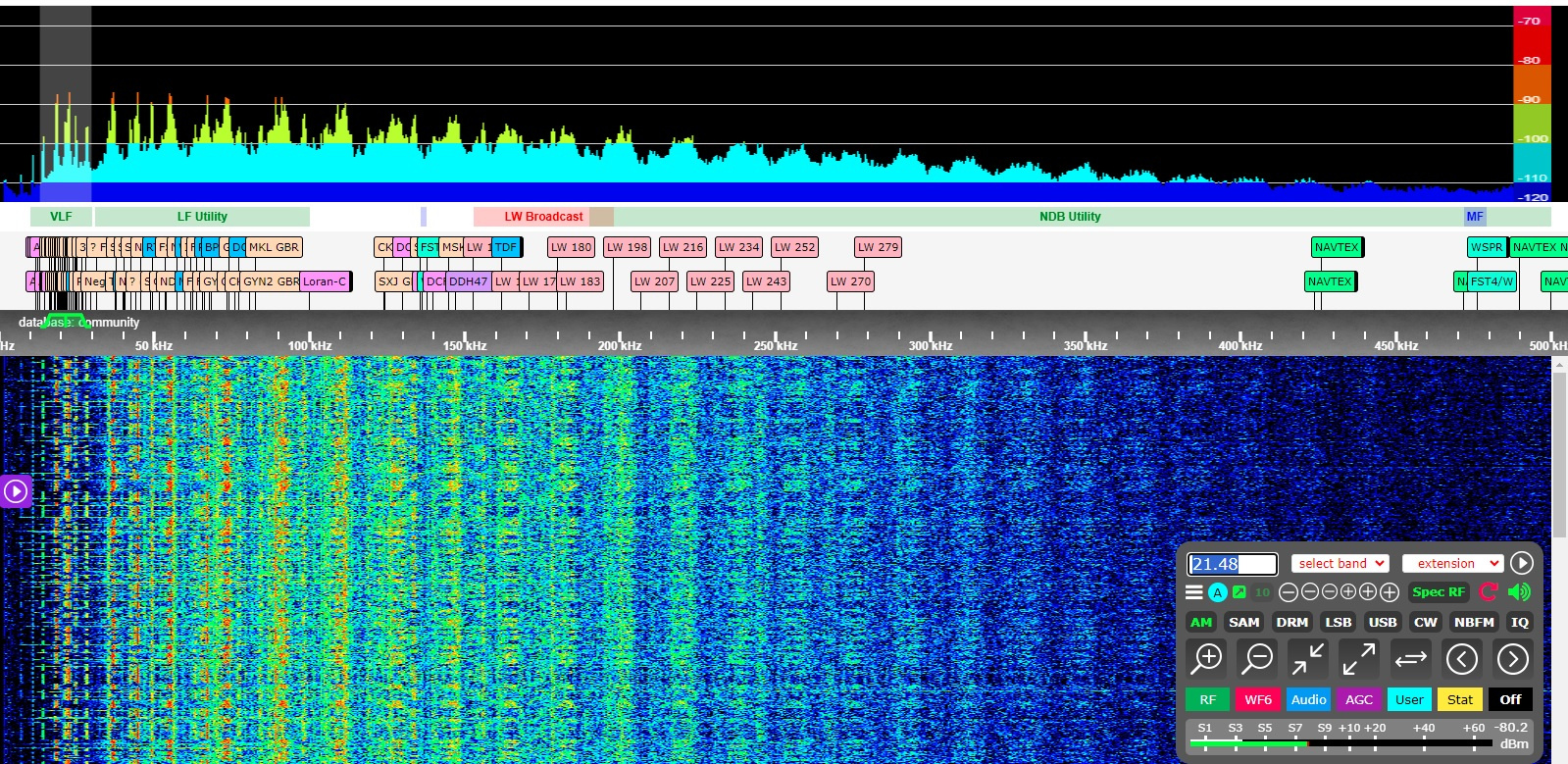Eliminating RFI... and ID this RFI?
Now I have my KiwiSDR2 set up, and a semi-permanent antenna set up, I'm starting to think about noise reduction.
I've got several possible noise sources in my shed near my Kiwi, and it seems to pick up everything. (The Kiwi and my ham stuff will live in a shed, 70 feet from my cabin).. Like my computer/power supply for the computer, nearby ioT switches with their switching supplies, a camera with a switching supply, possibly my nearby solar panel/charger....
What do I do to eliminate noise pickup? I see several discussions of various sources and solutions.
I already use a Wifi (TP-Link WR802N) device on the Kiwi, but the 4 foot ethernet cord seems to pick things up.
Seems to me there's 5 possible sources/entrances, besides noise the antenna itself is receiving:
Ethernet connection
5V Power connection
GPS antenna connection
Antenna connection
Nearby devices that directly interfere through the case. (This one seems least likely?)
So, do I get flat ethernet cable and wrap it around a 31 mix or 43 mix toroid ring? Both? Or do I use an ethernet isolator instead from DXE instead?
The GPS cable has a GDT surge arrestor in it, which has a 6" patch cable to the Kiwi.. so the GPS shield is grounded there.
The antenna has a DX Engineering Receiver Guard 6 inches from the Kiwi, then a Paradan disconnect 5 feet from the Kiwi, and a GDT surge arrestor 10 feet from the Kiwi. So the coax shield is grounded at both the Paradan and GDT. Is there any benefit in grounding coax closer to the Kiwi, or winding the final bit of coax into the kiwi through toroid rings?
Could the 5V power cable conduct noise/RFI it...receives? I'm using a linear supply.
My shed power comes from the panel 90 feet away underground. Is there any real benefit in an AC line filter for the last 10-20 feet of AC cable inside my shed?
Also, any thoughts on this RFI source? I have a 60 watt solar panel 100 feet from the shed, and a PWM charge controller from Morningstar inside the shed...this charges a 12V battery that runs a fan another 90 feet away 24/7/365. I was using an MPPT controller, but switched back to this old PWM recently. Morningstar says this: See the SunSaver Installation Manual for directions for changing the regulation from Pulse Width Modulation (PWM) charging to Slow Switching charging. Slow Switching regulation limits the switching frequency to 10 hz. (maximum), which can eliminate noise issues in some systems.
I'm wondering if this noise is from the PWM? I could switch to the 10hz regulation, but that is basically a permanent switch... (Cutting a wire inside the controller), so I'd want some confidence this is the source first. Problem is it's not there all the time, or all day..... The charge controller of course has different modes (bulk vs float, etc), so it may change regulation schemes throughout the day. Pic of the waterfall from 0-500 khz, and a recording of the sound where you can see it cycling on the waterfall: https://www.youtube.com/watch?v=xUKhvL5PGcw
Thanks for any thoughts, help and experiences!
-Nate
N8BTR

Comments
If it were me, I'd first take the antenna and GPS SMAs off, see if it goes away (it probably will) and then touch only the shield of the cable to the "ground" of the SMA to see if it might be common mode current through the Kiwi's ground planes. Ditto with the GPS coax. http://wsprdaemon.org/ewExternalFiles/Improving_Station_Noise_Performance04.pdf
If it is that, try a low inter-winding capacitance flux-coupled transformer placed right the SMA (making certain that the GPS coax doesn't cause it either, which it probably won't)
If it doesn't than suspect poor antenna symmetry and CM <==> differential conversion at the antenna.
Thanks, @n6gn , I didn't think of touching the shields of each connection to see what's coming through antennas vs ethernet or the power cable! I'll play around with that the next time I get a chance.
-Nate
N8BTR
I ordered 2 ethernet chokes here: https://www.kf7p.com/KF7P/RF_chokes.html
One each of 31 and 43 mix, and then wound what I could with one 5 ft cable around both toroids separately.
Today, I also wound some small coax and 16 ga wire for 5V power around another set of 31 and 43 mix toroids. In a week or 2, when I replace my TP-Link WR802N that died, I'll hook this in. Then the only thing that isn't choked at my Kiwi is the GPS antenna.
-Nate
N8BTR
Hi Nate,
You may find you can obtain better choking performance if you wind the power and RF coax side by side (bifilar) on the cores, with the same number of turns and in the same direction as each other.
Some optimisation of the number of turns on each different type of core material may also help. The impedance curves ideally should compliment each other, otherwise you may be wasting material and effort.
These notes are useful guidance when cascading common mode chokes.
http://www.ifwtech.co.uk/g3sek/in-prac/inpr1005_ext_v2.pdf
Regards,
Martin
Martin,
Thanks for your input! I had wound the antenna coax, and then saw how much room there was left and added the 5V power wires... I knew keeping the 2 power wires bifilar was beneficial, but didn't realize running the coax bifilar with the power wires would be potentially helpful...knowing that, I'll probably re-wrap them together then.... and can optimize turns a bit more knowing what I can fit now....although the extra coax length needed may get interesting.
Thanks for the guidance link, hadn't seen that one.
-Nate
N8BTR